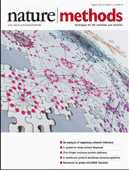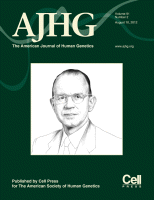Pediatrics:新方法降低癌症儿童致命性静脉导管感染
2012-09-10 T.Shen 生物谷
近日来自约翰霍普金斯儿童研究中心的研究者表示,很多医院会通过一系列的基本预防措施和根源分析方法来降低癌症儿童病人发生致命性的静脉导管感染。相关研究成果刊登在国际杂志Pediatrics上,文中研究者表示,运用三重威胁式的疗法可以使得1/5的患者长达两年以上避免遭遇感染。 前期研究表明,对静脉中心导管(central line)的日常精确维护可以切断病人感染的比例,但是在这项研究中,研究者表示,我
近日来自约翰霍普金斯儿童研究中心的研究者表示,很多医院会通过一系列的基本预防措施和根源分析方法来降低癌症儿童病人发生致命性的静脉导管感染。相关研究成果刊登在国际杂志Pediatrics上,文中研究者表示,运用三重威胁式的疗法可以使得1/5的患者长达两年以上避免遭遇感染。
前期研究表明,对静脉中心导管(central line)的日常精确维护可以切断病人感染的比例,但是在这项研究中,研究者表示,我们应该更加关注最易受感染的鹅绒病人,尤其是那些经历癌症疗法和骨髓移植的儿童患者。中心静脉导管(central venous catheter)是一种进行药物治疗,可以插入颈部、胸部以及腹股沟血管的导管。插入方法不当可以使得细菌通过导管进入到患者血液中,从而引发严重的感染。
由于免疫力低下以及中心静脉导管的频繁拔插,使得进行癌症化疗的儿童很容易遭遇这种侵袭性的血液感染,为了控制致病菌的感染,护士门会进行严格的器械前处理,包括频繁改变中心静脉导管的覆盖物等。新的研究中,研究者为病人提供了一种附加的设备-“钱包闪存卡”(wallet flash cards),其可以自由进行中心静脉导管的护理。当然了,研究者指出,父母也扮演着第二双眼睛的工作,父母必须严密检查中心静脉导管的处理是否合乎规范。
每年美国有250,000人因食用中心静脉导管而引发感染,研究者使用的新型方法可以降低20%的感染长达两年之久,在第一年中,感染比率维持不变;第二年中感染率反而降低为64%。相关研究成果由国立卫生研究院提供基金支持。(生物谷Bioon.com)
编译自:'Triple-Threat' Approach Reduces Life-Threatening Central Line Infections in Children With Cancer

doi:10.1542/peds.2012-0295
PMC:
PMID:
Implementation of a Central Line Maintenance Care Bundle in Hospitalized Pediatric Oncology Patients
Michael L. Rinke, MDa, Allen R. Chen, MD, PhD, MHSb, David G. Bundy, MD, MPHa, Elizabeth Colantuoni, PhDc, Lisa Fratino, MSN, RNd, Kim M. Drucis, MSN, RNd, Stephanie Y. Panton, MSN, RN, CPONd, Michelle Kokoszka, BSN, RNd, Alicia P. Budd, MPH, CICd, Aaron M. Milstone, MD, MHSa, and Marlene R. Miller, MD, MsCa,e
OBJECTIVE: To investigate whether a multidisciplinary, best-practice central line maintenance care bundle reduces central line-associated blood stream infection (CLABSI) rates in hospitalized pediatric oncology patients and to further delineate the epidemiology of CLABSIs in this population. METHODS: We performed a prospective, interrupted time series study of a best-practice bundle addressing all areas of central line care: reduction of entries, aseptic entries, and aseptic procedures when changing components. Based on a continuous quality improvement model, targeted interventions were instituted to improve compliance with each of the bundle elements. CLABSI rates and epidemiological data were collected for 10 months before and 24 months after implementation of the bundle and compared in a Poisson regression model. RESULTS: CLABSI rates decreased from 2.25 CLABSIs per 1000 central line days at baseline to 1.79 CLABSIs per 1000 central line days during the intervention period (incidence rate ratio [IRR]: 0.80, P = .58). Secondary analyses indicated CLABSI rates were reduced to 0.81 CLABSIs per 1000 central line days in the second 12 months of the intervention (IRR: 0.36, P = .091). Fifty-nine percent of infections resulted from Gram-positive pathogens, 37% of patients with a CLABSI required central line removal, and patients with Hickman catheters were more likely to have a CLABSI than patients with Infusaports (IRR: 4.62, P = .02). CONCLUSIONS: A best-practice central line maintenance care bundle can be implemented in hospitalized pediatric oncology patients, although long ramp-up times may be necessary to reap maximal benefits. Further research is needed to determine if this CLABSI rate reduction can be sustained and spread.
(责任编辑:yan.mao)
本网站所有内容来源注明为“梅斯医学”或“MedSci原创”的文字、图片和音视频资料,版权均属于梅斯医学所有。非经授权,任何媒体、网站或个人不得转载,授权转载时须注明来源为“梅斯医学”。其它来源的文章系转载文章,或“梅斯号”自媒体发布的文章,仅系出于传递更多信息之目的,本站仅负责审核内容合规,其内容不代表本站立场,本站不负责内容的准确性和版权。如果存在侵权、或不希望被转载的媒体或个人可与我们联系,我们将立即进行删除处理。
在此留言











#Pediatric#
56
#PE#
57
#静脉#
70
#新方法#
54
#癌症儿童#
67
#DIA#
54